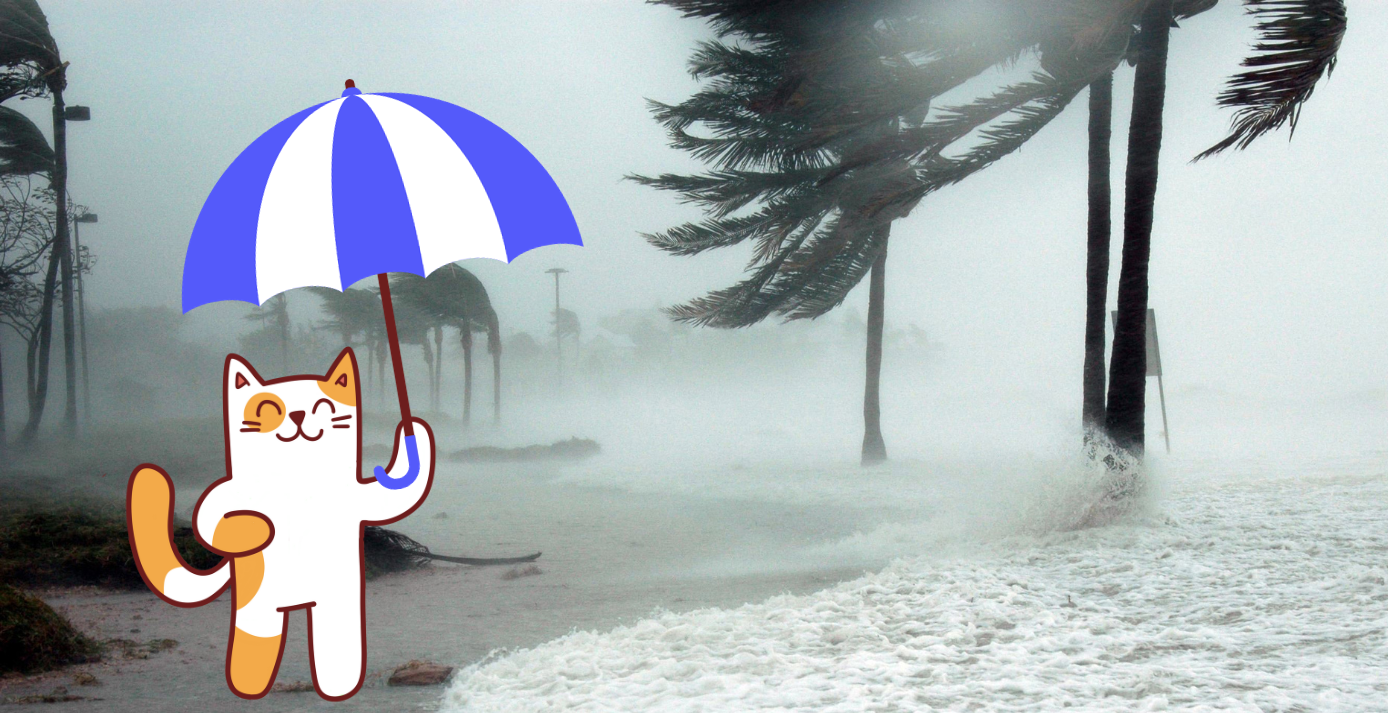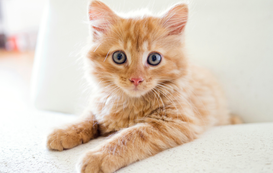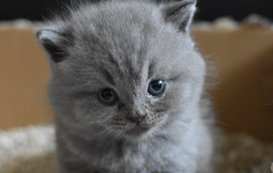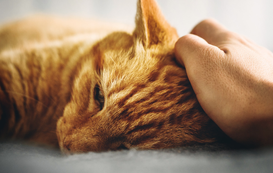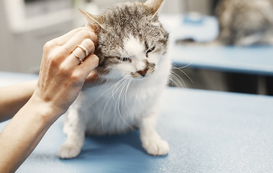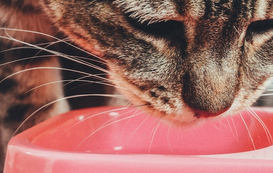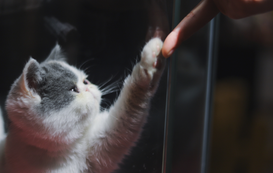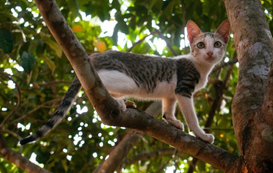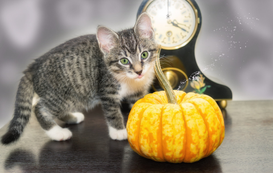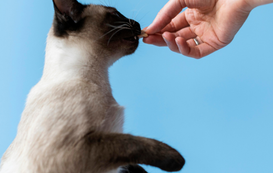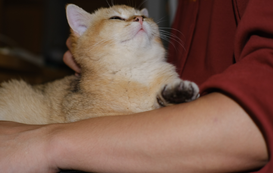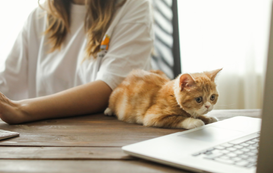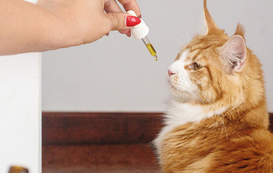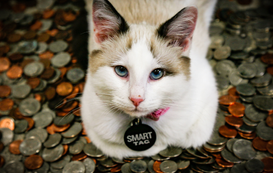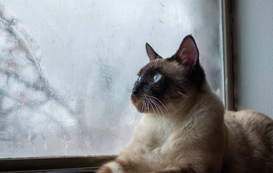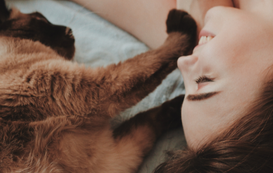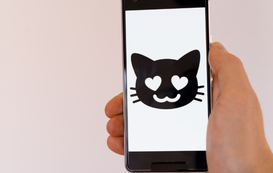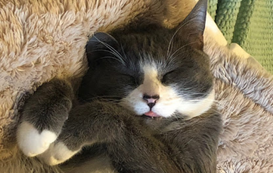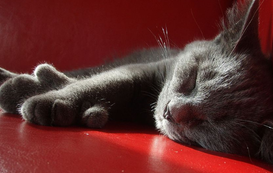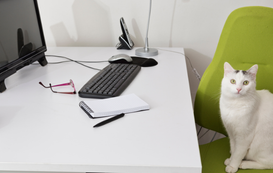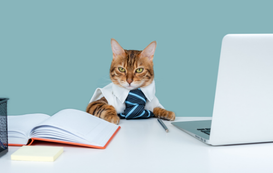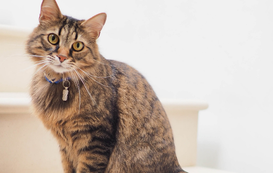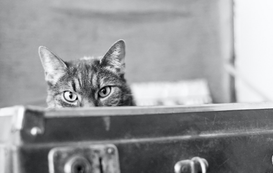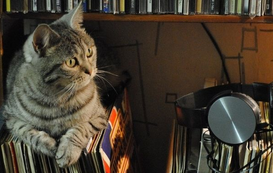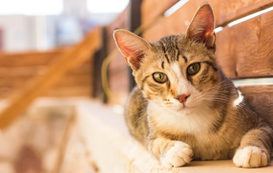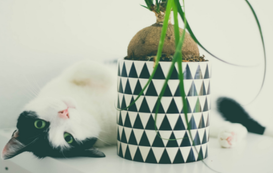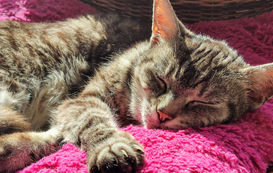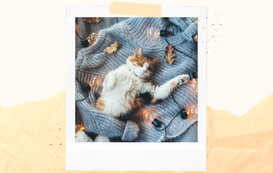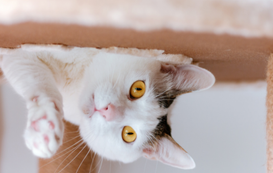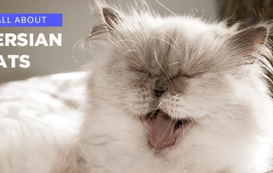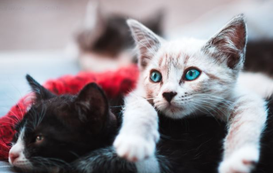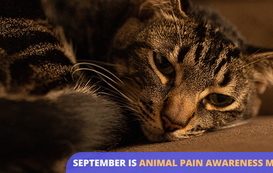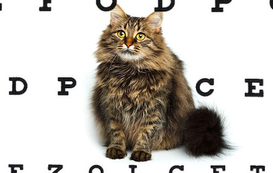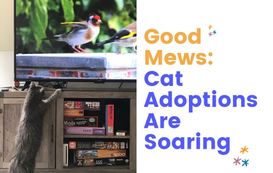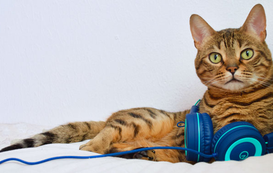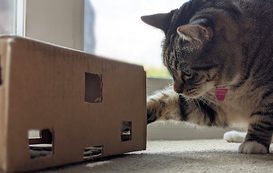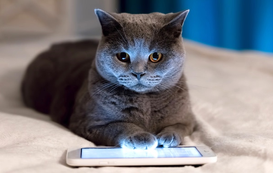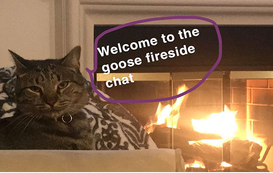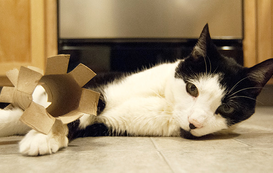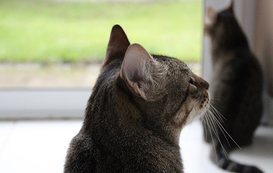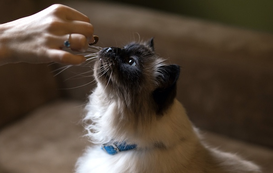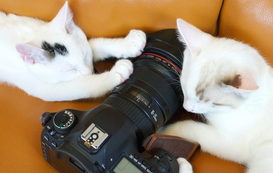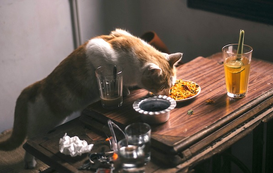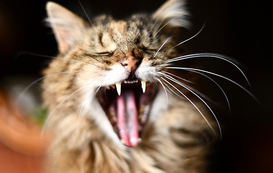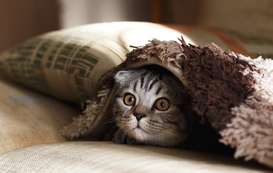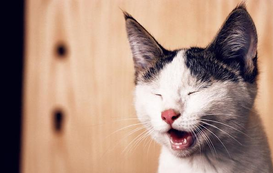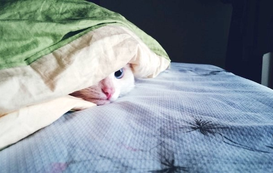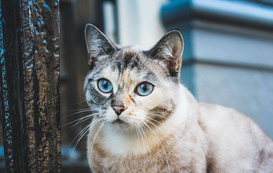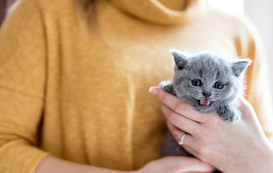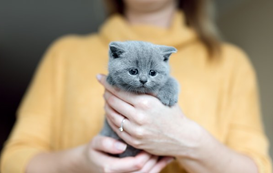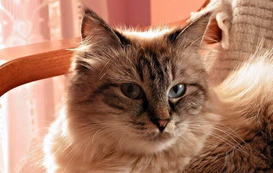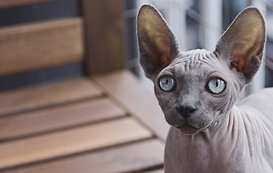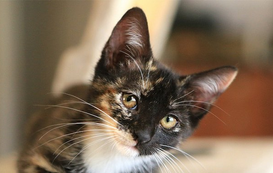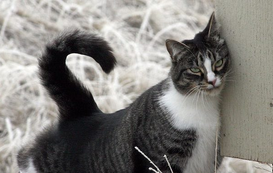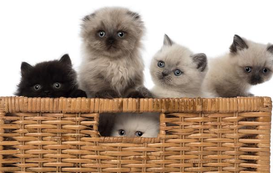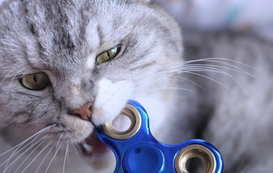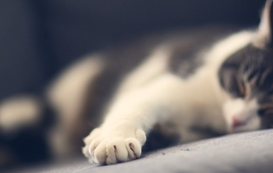Weathering the Storm: A Meowtel Guide to Emergency Preparedness
As a Meowtel sitter, clients entrust you with the care of their beloved feline companions. While your normal sitting responsibilities will usually revolve around feeding, playing, and providing company, it's vital to be prepared for unforeseen emergencies, particularly severe weather conditions. In this comprehensive guide, we'll walk you through the essential steps to ensure the safety and well-being of both you and the cats in your care during such emergencies.
1. The Meet & Greet - Setting the Stage for Preparedness
During the initial Meet & Greet is the best time to discuss emergency plans with your client. This is your chance to make a great first impression. By taking detailed notes and asking thoughtful questions, you demonstrate the high level of care you’re going to provide to their kitties. Some important emergency prep items to cover include:
Contact Information: Though we recommend keeping communication within the Meowtel app when at all possible, in the event of an emergency, it is important to be able to reach your clients quickly. At the Meet & Greet, obtain the cat parents' contact numbers and any nearby emergency contact information as well. Make sure they have your contact information as well.
Vet Details: On the cat parents' Meowtel profile, there is a section where they can upload a vet release form. Prior to your Meet & Greet, check to make sure that they have done so. If not, politely ask them to fill it out. This form not only provides you with their vet’s information but also allows you to get their kitty care as quickly as possible.
Medical needs: Ensure you have all necessary medication information and instructions. Discuss any specific medical requirements the cats may have during an emergency.
2. Creating an Emergency Plan
It is also recommended to discuss potential scenarios you may encounter in the event of an emergency. While we sincerely hope you won't need to put it into practice, having an emergency plan in place serves not only to alleviate panic in stressful situations but also enables swift and decisive action. During the Meet & Greet, work closely with your clients to develop a detailed emergency plan. Some topics to cover include:
Evacuation Routes: Discuss potential evacuation routes from the house and designate safe meeting points outside the home in case of evacuation.
Temporary Relocation: If evacuation is necessary, collaborate with your client to identify suitable temporary accommodations for the cats. This might involve staying with you (the sitter), friends, family, or a trusted veterinarian.
Medical Needs: Clearly understand any medical requirements the cats may have. Collect all necessary medications, instructions, and any special care they might need.
Comfort and Transport Items: Learn about the cats' carrier, favorite toys, blankets, and hiding spots. If time allows to secure them, these familiar items can provide comfort during stressful situations.
3. Preparing for the Unexpected
While it's generally best to avoid leaving cats alone for extended periods, in emergency situations where your safety is at risk, it sometimes might be necessary. If you're in a high-risk area for severe weather or natural disasters, it’s important to monitor weather forecasts diligently. For instance, if you know that there is an impending snowstorm heading your way, leaving extra food and water for the cats is crucial for their well-being if there is concern you won’t be able to reach them in the coming days. Steps to take:
Notify the cat parent and Meowtel: If you ever suspect that you will be unable to complete a visit for any reason, always reach out to both the cat parent and Meowtel. (1-844-MEOWTEL or [email protected])
Food and Water: Determine the cats' daily food and water needs based on their age, size, and dietary preferences. Keep your client updated with your course of action. If possible, ask the client’s emergency contact, family member, or a neighbor who lives close by to check in on the cats during your absence. If the cat has medication needs, this is especially vital. Leave at least a two-day supply of food and water, ideally more, depending on the severity and duration of expected weather conditions.
Accessible Locations: Place the extra food and water in easily accessible areas within the house, away from direct sunlight and drafts.
Safety Measures: Secure the home by closing windows, locking doors, and removing any potential hazards or dangerous items that cats might get into. Ensure that any thermostats are set to a comfortable temperature.
If you end up being able to attend the visits after all, that’s great! But having backups in place can be a real lifesaver in the event that weather proves to be too dangerous.
4. Responding to Emergencies - Your Actions Matter
Receiving evacuation orders is never fun, but having a plan in place can make this scary situation easier to deal with. In the event of severe weather conditions or evacuation orders, actions are critical. If you receive evacuation orders due to severe weather, follow these steps:
Contact your client: Notify the cat parents immediately about the situation, your planned course of action, and where you intend to relocate their cats. Provide regular updates as the situation unfolds.
Reach Out to Meowtel: Inform Meowtel about the emergency and your intended actions, so that we may offer additional guidance or resources to assist you, your clients, and the cats. For the fastest response contact us at 1-844-MEOWTEL or [email protected]
Prepare for Relocation: Safely transport the cats to the pre-discussed temporary accommodation, This might involve staying with you (the sitter), friends, family, or a trusted veterinarian. Ensure you bring all necessary supplies, including food, water, medications, and (if time allows) comfort items.
5. What to do if You are Unable to Reach Your Client
Not being able to reach your client during a stressful situation can be scary. If you're unable to reach your client:
Follow the emergency plan: When in doubt, sticking to the steps outlined in the plan that you and your client created is one of the best ways to ensure you’re providing the appropriate care for their kitty.
Stay in Contact: Try to get in touch with the local emergency contact they provided, as well as Meowtel so that we can provide you with support.
When all else fails: Hopefully this won’t be the case. However, if necessary, you may have to make decisions in the best interest of the cats' safety and well-being. We will be here to provide support to you as well.
6. Monitoring Weather Conditions
To effectively respond to emergencies, it's vital to stay informed about weather conditions and potential hazards. For instance, if you live in Florida and it’s hurricane season, you may want to pay closer attention than you normally would on another average day. To stay informed, we recommend:
Monitor News and Weather Sources: Stay tuned to local news, weather forecasts, and official emergency channels such as The National Weather Service.
Emergency Alerts: Sign up for emergency alerts on your phone and keep it charged. (Having a portable battery pack can also be helpful) These alerts can provide critical information about evacuations and dangerous conditions.
7. Safety During Emergencies
Your safety is a top priority. It also allows you to be able to take the best care of your kitty clients. By being well-prepared and proactive in understanding the unique needs and potential risks in your area, you ensure that you can always be there for your clients’ furry companions, even in challenging situations. To do so, we recommend the following:
Emergency Kit: It can be helpful to maintain an emergency kit with first aid supplies, flashlights, extra batteries, non-perishable food, and bottled water. If driving, you can keep this in your car so that you always have it at the ready. If using public transport or other methods of transport, having a bag that is easy to carry with emergency supplies is a great alternative.
Transportation: If you drive, ensure your vehicle is in good working order and has a full tank of gas in case evacuation is required. If not, make sure you have plans in place for safe transportation in the event of an evacuation.
Emergency Contacts: Keep a list of emergency contacts, including your clients’, local authorities, and Meowtel’s contact information.
8. After the Storm - Wrapping Up Safely
Once it's safe, return the cats to their regular environment. To ensure a successful and safe return:
Replenish Supplies: Ensure you restock any food, water, and medications that were used during the emergency.
Communication: Contact the cat parents to update them on the situation, how their cats were cared for, and any additional information they might need.
Home Assessment: Conduct a thorough assessment of the home to check for any damage or issues that may have arisen during the emergency. Report any concerns to the cat owners.
In Conclusion
Being a responsible cat nanny means not only providing daily care and affection but also preparing for unforeseen emergencies. Your diligence, communication, and commitment to the safety and well-being of the cats under your care will give both the cats and their owners peace of mind during challenging times. By following these guidelines, you can ensure that your furry friends are safe, comfortable, and well-cared for in any weather-related emergency. Remember, your preparedness can make all the difference when it matters most.

